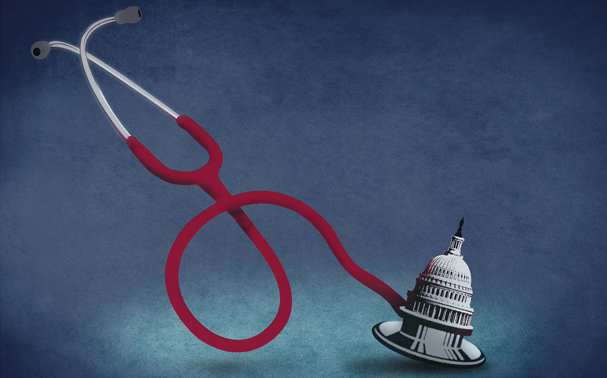From my America Out Loud Pulse podcast: Medical Care Is About Patients, Not Politics with Dr. Richard Amerling - https://www.americaoutloud.com/medical-care-is-about-patients-not-politics-w-dr-richard-amerling/
Several years ago the Association of American Physicians and Surgeons publish a Patient Bill of Rights. In this age of more government and corporate control of medical care, it’s time we remembered those rights.
“All patients should be guaranteed the following freedoms:
- To seek consultation with the physician(s) of their choice;
- To contract with their physician(s) on mutually agreeable terms;
- To be treated confidentially, with access to their records limited to those involved in their care or designated by the patient;
- To use their own resources to purchase the care of their choice;
- To refuse medical treatment even if it is recommended by their physician(s);
- To be informed about their medical condition, the risks and benefits of treatment and appropriate alternatives;
- To refuse third-party interference in their medical care, and to be confident that their actions in seeking or declining medical care will not result in third-party-imposed penalties for patients or physicians;
- To receive full disclosure of their insurance plan in plain language, including:
- CONTRACTS: A copy of the contract between the physician and health care plan, and between the patient or employer and the plan
- INCENTIVES: Whether participating physicians are offered financial incentives to reduce treatment or ration care;
- COST: The full cost of the plan, including copayments, coinsurance, and deductibles;
- COVERAGE: Benefits covered and excluded, including availability and location of 24-hour emergency care;
- QUALIFICATIONS: A roster and qualifications of participating physicians;
- APPROVAL PROCEDURES: Authorization procedures for services, whether doctors need approval of a committee or any other individual, and who decides what is medically necessary;
- REFERRALS: Procedures for consulting a specialist, and who must authorize the referral;
- APPEALS: Grievance procedures for claim or treatment denials;
- GAG RULE: Whether physicians are subject to a gag rule, preventing criticism of the plan.”









